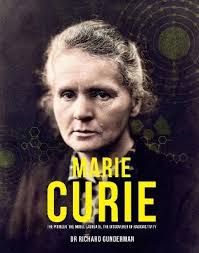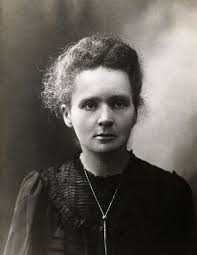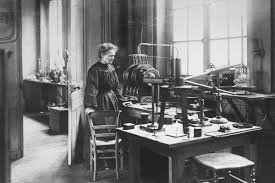Marie Curie and the Discovery of Radioactivity
Introduction
Early Life and Education
Our knowledge of atomic physics and chemistry was drastically changed by Marie Curie’s groundbreaking contributions to the study of radioactivity. She was also a trailblazer for women in science. Curie, who was born Maria Skłodowska in Warsaw, Poland, in 1867, rose from a humble background to become the first woman to earn a Nobel Prize, which is evidence of her extraordinary intelligence, tenacity, and commitment to scientific research. In addition to expanding scientific understanding, her findings paved the way for important advancements in technology and medicine. This paper examines Curie’s biography, her studies of radioactivity, and the significant contributions she made to both science and society.
- Family Background
Marie Curie was born into a family of educators. Her father, Władysław Skłodowski, was a teacher of mathematics and physics, while her mother, Bronisława, was a talented pianist and educator. The family’s emphasis on education instilled in Curie a lifelong passion for learning and a desire to pursue scientific inquiry.
- Pursuing Higher Education

Curie’s education was fraught with challenges, especially due to the limited opportunities for women in Poland. In pursuit of higher education, she moved to Paris in 1891, where she enrolled at the University of Paris (Sorbonne). Struggling initially with the language barrier and financial constraints, Curie’s perseverance paid off. She earned degrees in physics and mathematics, excelling in her studies and laying the foundation for her future research.
The Discovery of Radioactivity
- Understanding Radioactivity
Radioactivity was a term that was beginning to gain traction in the scientific community in the late 19th century. It referred to the phenomenon where certain elements emitted radiation, leading to the discovery of new forms of energy release from the nucleus of atoms. The study of radioactivity gained momentum following Henri Becquerel’s discovery of natural radioactivity in uranium in 1896.
- Curie’s Research
Inspired by Becquerel’s work, Marie Curie began her own investigations into radioactive materials. In 1898, along with her husband, Pierre Curie, she discovered two previously unknown elements: polonium and radium. Curie meticulously isolated these elements from uranium ore, demonstrating their radioactive properties.
- Theoretical Contributions
Curie’s research challenged the prevailing notions of atomic structure and paved the way for a deeper understanding of nuclear physics. She introduced the idea that radioactivity was not the result of chemical reactions but rather a property inherent to certain elements. This revelation significantly shifted the scientific discourse regarding atomic theory and laid the groundwork for future research in nuclear chemistry.
Marie Curie’s Methodology and Challenges
- Innovative Techniques
Curie developed innovative techniques for measuring radioactivity. She constructed sensitive instruments, including the electrometer, to detect and quantify radiation levels. Her meticulous approach to experimentation, often conducted in harsh laboratory conditions, reflected her dedication to uncovering the mysteries of radioactivity.
- Personal Sacrifices
Curie encountered several obstacles in her personal and professional life despite her remarkable accomplishments. In the male-dominated scientific world, she frequently had to fight for support and recognition due to severe gender bias. Her health also suffered as a result of her studies; long-term radiation exposure, which was not well recognized at the time, caused major health problems in later life.
Recognition and Achievements
- Nobel Prizes
Marie Curie’s contributions to science earned her significant recognition. In 1903, she was awarded the Nobel Prize in Physics, shared with Pierre Curie and Henri Becquerel, for their work on radioactivity. This achievement made her the first woman to receive a Nobel Prize.
In 1911, Curie received her second Nobel Prize, this time in Chemistry, for her discovery of radium and polonium. She remains the only person to have won Nobel Prizes in two different scientific fields, underscoring her unparalleled contributions to science.
- Establishing Research Institutions
Curie’s influence extended beyond her research. In 1914, she founded the Radium Institute in Paris, which became a center for research on radioactivity and its medical applications. This institution played a crucial role in advancing the understanding of radiation therapy for cancer treatment, revolutionizing the field of medicine.
Impact on Science and Society
- Advancements in Medical Science
Curie’s discoveries had a profound impact on medi cine, particularly in the treatment of cancer. The introduction of radium as a treatment for tumors marked a significant milestone in medical history. Radiation therapy, based on Curie’s research, continues to be a cornerstone of cancer treatment today, saving countless lives.
cine, particularly in the treatment of cancer. The introduction of radium as a treatment for tumors marked a significant milestone in medical history. Radiation therapy, based on Curie’s research, continues to be a cornerstone of cancer treatment today, saving countless lives.
- Influence on Physics and Chemistry
In addition to advancing the study of radioactivity, Curie’s contributions have wider ramifications for chemistry and physics. Future researchers were motivated by her work to investigate atomic structure, which paved the way for the advancement of quantum mechanics and additional nuclear energy research. Numerous uses, such as nuclear power and imaging, have been made possible by our growing understanding of radioactive isotopes.
- Breaking Gender Barriers
Curie’s achievements challenged the traditional gender roles of her time. As a woman in a male-dominated field, she became a symbol of female empowerment in science. Her success inspired future generations of women scientists, encouraging them to pursue careers in STEM (Science, Technology, Engineering, and Mathematics) fields.
Legacy and Continuing Influence
- Cultural Impact
Marie Curie’s legacy extends beyond her scientific contributions. She became an icon of perseverance, resilience, and intellectual curiosity. Her life story continues to inspire numerous biographies, films, and documentaries that celebrate her achievements and dedication to science.
- Institutional Recognition
Many institutions and awards have been established in Curie’s honor, including the Curie Institute in Paris and the Marie Curie Actions program, which supports researchers across Europe. These initiatives aim to promote scientific research and support young scientists, reflecting Curie’s commitment to education and innovation.
- Continued Research on Radioactivity
Curie’s discoveries laid the foundation for ongoing research in radioactivity and nuclear physics. Scientists continue to explore the properties of radioactive elements, leading to advancements in areas such as nuclear medicine, radiology, and energy production. The principles she established remain relevant in understanding the behavior of atomic particles.
Challenges and Health Consequences
- Health Issues
Despite her groundbreaking contributions, Curie paid a heavy price for her work. At a time when the dangers of radiation exposure were not fully understood, she suffered from health issues related to her prolonged exposure to radioactive materials. In 1934, she died from aplastic anemia, a condition linked to radiation exposure.
- Advocacy for Safety Regulations
Curie’s experiences highlighted the need for safety regulations in the handling of radioactive materials. Her legacy has prompted greater awareness of the risks associated with radiation and has led to the establishment of safety protocols in scientific research and medical practices. Today, the importance of protecting researchers and patients from radiation exposure is a fundamental aspect of scientific and medical ethics.
Conclusion
Marie Curie’s groundbreaking work in radioactivity not only transformed the scientific landscape but also reshaped societal perceptions of women in science. Her dedication to understanding the mysteries of the atomic world has had lasting effects, leading to significant advancements in medicine, physics, and chemistry. Curie’s legacy as a scientist, educator, and pioneer continues to inspire future generations, emphasizing the importance of perseverance, curiosity, and a commitment to discovery.

It is evident from considering her life and accomplishments that Marie Curie was more than just a scientist; she was a visionary who changed the course of both science and society. Her unwavering quest for knowledge and her bravery in the face of difficulty serve as a potent reminder of both the lasting influence of people who dare to push the limits of knowledge and the transformational potential of science.
